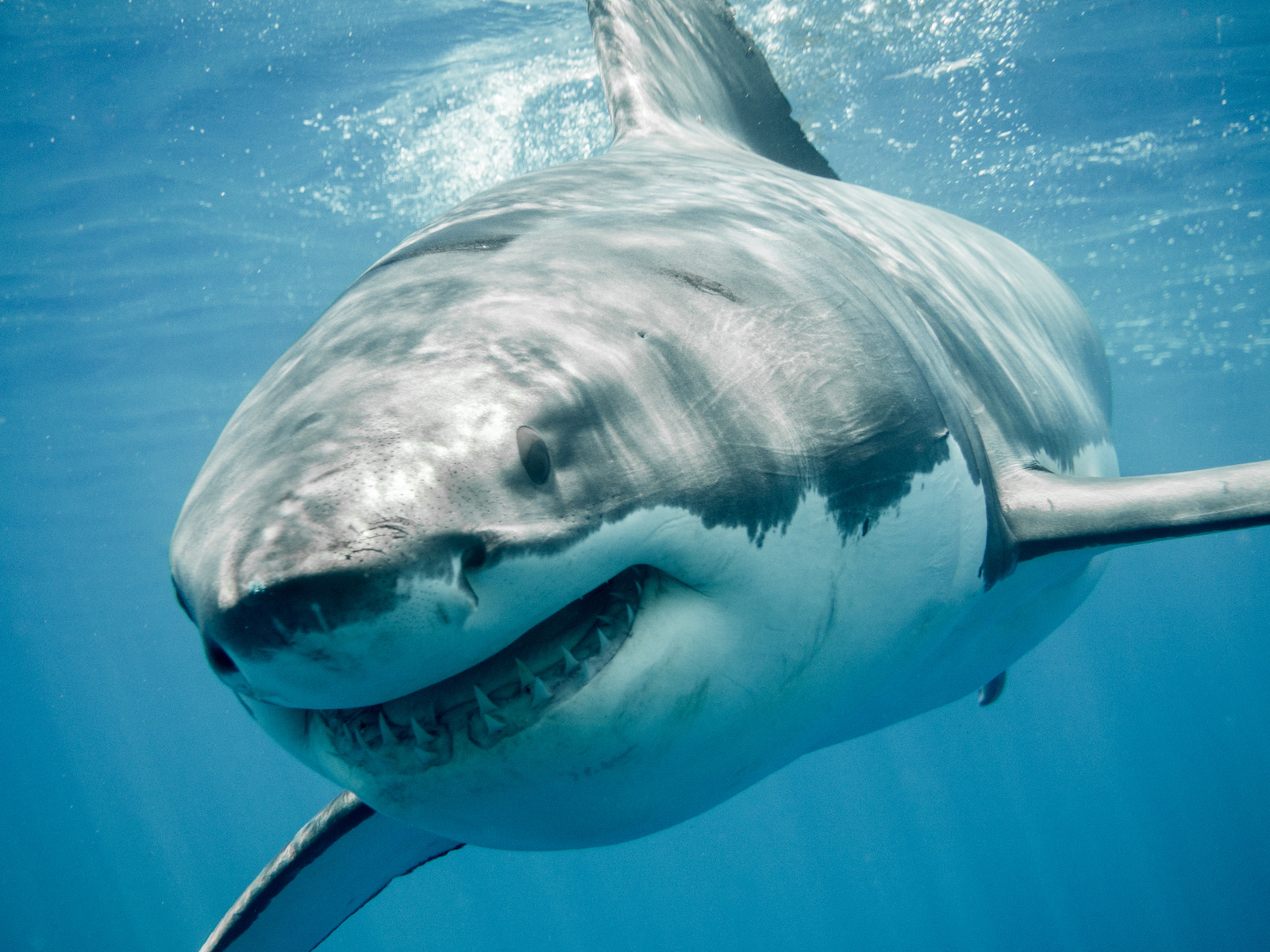Great white shark population off California's coast is growing
There is a healthy population of about 300 white sharks in the region.

The great white shark population off Northern California's coast is healthy and growing, a new study finds.
A survey of the great whites (Carcharodon carcharias) off the northern coast finds a stable adult population and a slight uptick in the number of subadult sharks, totaling 300 individuals. Researchers used a seal decoy to lure the apex predators to their boats so they could photograph and count the sharks.
The findings are great for the region.
Related: 10 times sharks made our jaws drop
"Robust populations of large predators are critical to the health of our coastal marine ecosystem," study co-author Taylor Chapple, a marine ecologist at Oregon State University, said in a statement. "So our findings are not only good news for white sharks, but also for the rich waters just off our shores here."
Great white sharks are found in coastal waters across the world. They are threatened by overfishing, according to the World Wildlife Fund, and their global population is in decline.
On the Pacific coast, however, the sharks seem to be doing well. Chapple and his team originally published a population estimate for sharks off Northern and Central California in 2011. The new research updates the previous estimate with longer-term observations. The sharks found in the region don't stay in one place: They spend half the year in the northeastern Pacific, between Baja, Mexico and Hawaii, then they spend the other half of the year closer to shore, ranging as far north as Washington and as far south as Mexico. The largest populations are found near the Guadalupe Island off Mexico and in the California Current off Northern California. This current stretches from Monterey Bay in the south to Bodega Bay north of San Francisco.
Sign up for the Live Science daily newsletter now
Get the world’s most fascinating discoveries delivered straight to your inbox.
From 2011 to 2018, Chapple and his colleagues made boat-based observations at three sites near Southeast Farallon Island, Año Nuevo Island and Tomales Point off the California coast. They collected more than 1,500 photographs as well as underwater video footage of great white sharks, using the dorsal fins to identify individual sharks and get a more accurate count.
"Every white shark has a unique dorsal fin. It’s like a fingerprint or a bar code," Chapple said.
This individual identification also allowed the researchers to follow male and female sharks over a long period of time. Though the overall population numbers seemed strong, the researchers were slightly worried to find that the adult female great white population is only around 60.
"That underscores the need for continued monitoring of white sharks, as there are relatively few reproductively active females supplying the population with additional sharks,” study co-author Paul Kanive, a doctoral candidate in ecology at Montana State University, said in the statement.
Much about great white shark reproduction is mysterious, but scientists believe the gestation period is around 12 months and that females usually give birth to between two and 10 pups at a time.
The possible population growth could be the result of natural fluctuation, or it could indicate that the shark protections in the region are working, the researchers wrote in the May issue of the journal Biological Conservation. In particular, restrictions on gillnets — fishing nets that are left in the water to entangle fish — might be improving the survival rate of young sharks. More should be done to protect the white sharks across their migratory path, Chapple said.
"We can provide as much protection as possible while they are in coastal waters, but these sharks are highly migratory animals,” he said. "It will take international cooperation, agreement and enforcement to protect them."
Originally published on Live Science.

Stephanie Pappas is a contributing writer for Live Science, covering topics ranging from geoscience to archaeology to the human brain and behavior. She was previously a senior writer for Live Science but is now a freelancer based in Denver, Colorado, and regularly contributes to Scientific American and The Monitor, the monthly magazine of the American Psychological Association. Stephanie received a bachelor's degree in psychology from the University of South Carolina and a graduate certificate in science communication from the University of California, Santa Cruz.










